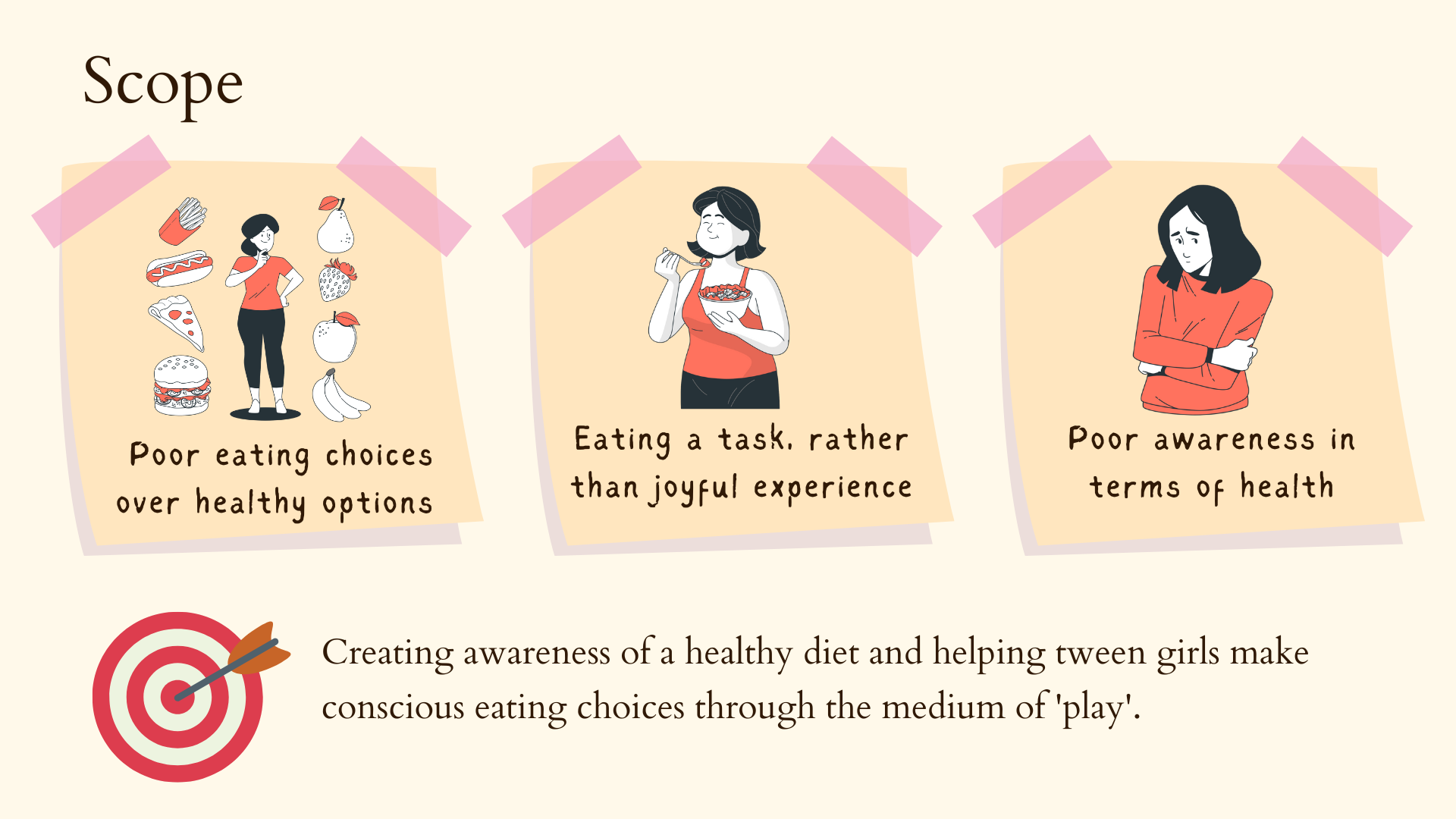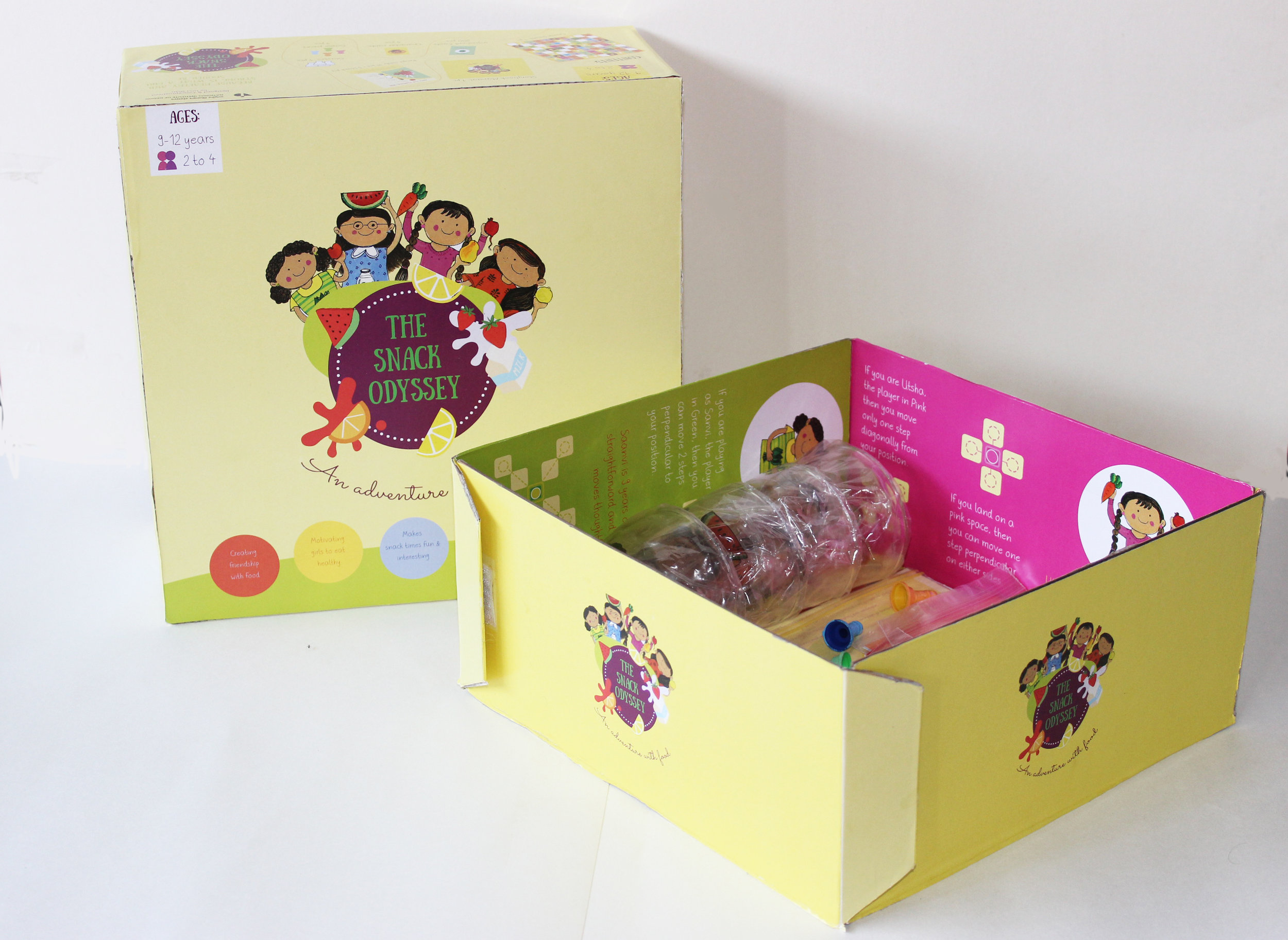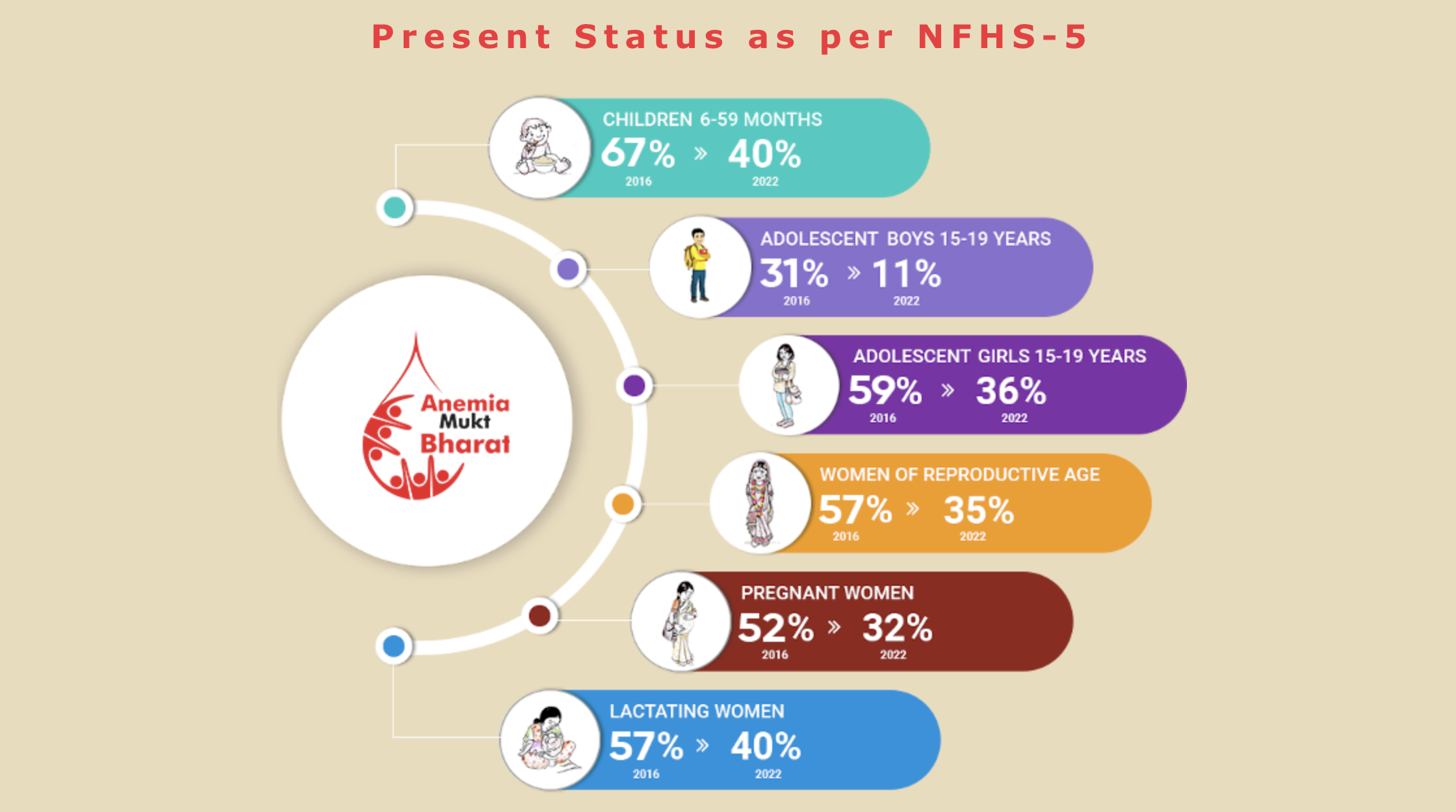Instigating healthy eating habits
in tween girls
“When women take care of their health, they become their best friend.”
UN ranks India as a middle- income country and the World Economic Forum considers India as one of the countries with high gender inequality.
Gender plays a very important role in India and is a determinant for the low status and poor health outcomes of women.
Background
While growing up in India, there were times I felt that I was fortunate to be raised by a family who does not discriminate between a boy or girl. This may sound highly orthodox or unreal to many living in the more developed countries. But it is not uncommon to see a girl being fed lesser than her brother; or a girl not given education because she should be at home taking care of the family. There are innumerable goddesses that Indians have worshiped over the years but in their homes, the women have been victims of social and domestic abuse. Female Infanticide, Dowry, Domestic violence, Disparity in education, Child Marriages, Inadequate Nutrition, Death during childbirth, Sexual harassment, Trafficking; all these issues are present in many parts of India (rural as well as urban areas). Statistics show that being deprived from care and nourishment in the adolescent ages have led to serious complications in the future. India is home to 253 million adolescents (10 to 19 years) and we stand with them at a crossroad between losing out on the potential of a generation or nurturing them to transform society.
Data as per the UNICEF’s report in 2016. Thankfully it has reduced to 36% and hopefully India will be Anemia free in near future.
Brief
This project was supported by ICDS- Integrated Child Development Scheme under the Ministry of Women & Child Development of India. The bigger goal of this research was to identify the gap areas that lead to undernourished and deprived health of girls (aged 8 -12) and determine if ‘play’ can be integrated to bridge this gap. Through this project,
I wanted to help raise awareness about eating healthy and making conscious choices when it came to eating options and habits.
Anemia being one of the issues I wanted to tackle, doing this empathetically and sensitively was integral. For that, play as a medium was something that can be used to create a powerful change.
‘Eating’ should not be looked as a task and rather be a joyful experience.
Process
As the Researcher & Designer for the project, my role was to plan and accomplish a project that can help us free India from Anemia slowly but gradually. The best way to do so would be to figure out :
What are the root causes of Anemia being a part of majority households especially tween girls & women?
Understand & empathise with users and identify pain points throughout the eating/ growing journey.
Collaborate with people in health sector: gynaecologists, nutritionists, entrepreneurs, government officials and make use of their knowledge and research.
I planned the Research & Design project to fit into a 8 week cycle
Research Methodology
In a research project so sensitive, as a researcher and as a woman I realised early on that I may come across some hard and disturbing information and it was important to be prepared. Hence, I divided my initial research phase into two chunks. The first part, ‘Empathise’ was to strike a chord with the audience. Looking at the data available in books, research papers and information provided by the ICDS (Secondary Research) helped me connect to the actual scenarios. The second, ‘Define’ was a more confident step to the issues, interacting with several tween girls, women and families, meeting experts (Primary research) to correlate data to facts was the goal.
Secondary Research
The first week of the project was assigned to look at the data around us and the goal was to see :
Statistics of poor health / undernourishment of tween girls. Identifying if the problem is relevant in urban areas or only limited to rural settings where resources are scarce.
What factors contribute to anemia in women? Is it prevalent at a certain age or starts the damage later?
Understanding the geographical, socio-economical & agricultural aspects of the regions where Anemia is high.
Looking at videos, papers by ICDS and other information available on web to understand how other countries have tackled this issue in a different scenario.
Understanding in detail if various social factors have contributed to the poor health of the girl child or is it purely based on resource scarcity. Verifying this by looking at reports that have studied families over a period of time.
Primary Research
I wanted to verify all the information I had collected over the week and since the project timeline was short, I had to burn the midnight oil and prepare interview questionnaires, surveys, etc for finding relevant data from growing girls, women (working women, pregnant or lactating women, homemakers). The most difficult part of this was finding participants who are willing to share information.
Women have been struggling with health issues over centuries and they all came out in huge numbers to support me. I successfully interviewed and surveyed over 50 tween girls, 99 women and 30 men who shared personal observations from routines of their mothers, sisters, wives or daughters. The pain points were defined and I had some very vital information through this
Interviewed 5 experts across the field, District Health Officers, Child Development Project Officers through ICDS
Interviewed Nutritionists, Gynaecologists to understand if deficiency plays an important role in tackling this issue from its root.
Interviewed an expert in the field who is using Play as a medium to spread awareness about Menstruation, another taboo subject from Indian standpoint.
Field study at various ICDS centres to understand the activities being done to spread awareness about anemia.
Data collected during Surveys/ Interviews in the project
Data collected during Surveys/ Interviews in the project
Data Analysis & Synthesis
Since the project timeline was short and information had to be laid out in front of the eyes so that it was easier to connect the dots later, I had started making quick notes during field study. This slowly graduated into a huge map which talked about the highlights from entire project. The major insights from the research project were :
Women lack awareness about health in general and have always put themselves in least priority and this experience is passed to their own kin, the tweens who end up being clueless about their health as well.
Many Urban homes with literate women also show the same pattern of neglect. Its not just prevalent in rural areas. In fact ICDS itself is working in 2/3 and 4 tier villages & towns. The Urban areas have no access to any such facilities. It is taken for granted that developed regions have more awareness, which is not the case at all.
Women are skilled cooks. More than 80% of the tween girls interviewed showed interest in activities that involved DIY, cooking, any hands-on experience
Societal bias and gender inequality have played huge roles in undernourishment of women, but the scenario is changing. Literacy and higher education among women is changing mindsets. They are open to learning about their physical, mental and overall health and are willing to make changes in their lifestyles as well.
Growing tweens did show patterns where they focused on outer beauty more than overall health. Questions such as, how to stop hairfall, how to get rid of acne during ICDS sessions with these tweens; was a meaningful insight.
Affinity Diagram/ Process Map of the data collected
Design Development
During the research phase two things came forward. One of them being Habit cultivation. An expert shared that for cultivating a positive habit into your already rigid and structured routine can be extremely painful. But, 21 days of following a new routine/ habit can help it be integrated smoothly into your routine. This was a very interesting idea and had been tested in various scenarios positively. So I thought integrating that into the design ideas would be beneficial. The second thing that came through, was how the tween girls and women at ICDS and other awareness regimes enjoyed anecdotes or stories as a medium of conveying important messages rather than relays of presentations. Hence, I also wanted to integrate that in my product. The final aim was to design a product/ game/ service that can motivate tween girls of ages 8-12 years to eat and prepare healthy snacks in a playful manner. Through a continuous storyline also explain them the nutritional benefits of the items they consume, strategically in a way they like to hear it. For eg : ‘Beetroot juice can help you get flawless and spotless skin’ ; but not highlighting that ‘beetroot is also a great source of iron and helps in increasing Haemoglobin levels as well’. That is how ‘The Snack Odyssey’ was born! A story of 4 tween girl friends who discover their Grandma’s book of recipes and go on a journey through the board game to find the ingredients. Once they successfully complete the journey, they can prepare the recipe for real in their homes with the help of their mothers as well!
Snack Odyssey- An outcome/ game that was created to eliminate Anemia from India.
Testing
The game play cannot be certain until it is tested with an audience at various stages. Once the mock-up was prepared, I tested it out with a group of tween girls in the ages 8-14. It was interesting to see how the game evolved and with it their moods went up and down as well! After testing it in a small group, we tested it at various ICDS centres as well.
Impact & Future
The tweens and women who interacted with me in the entire span of the project will impact so many lives in the future. It was huge endeavour for me to go beyond my comfort zones and ask so many questions to complete strangers. But a fellow woman is never a stranger, it automatically connects a thousand chords even if you don’t possibly understand their languages. Their stories were the source of inspiration for me everyday.
The research conducted was a starting point for many designers to dive in the pool of resources and create impactful products that can be cherished by these tweens and women everyday. I would like to quote what an expert shared, “Design for your younger self, it will work surely.” When I wore my Researcher Hat, I knew that the people I am talking to would be participating to the higher goal of eliminating Anemia in the country. Since the conception of the research many Government schemes have been launched with a goal to eliminate Anemia from India. I am glad that with these schemes we have been able to move ahead in this direction positively. We are seeing a steep downfall in the anemia affected tween girls. It went from 59% in 2016 to 36% in 2022. This is huge! I strived to play a small role in doing that. This project was an outcome of my blood and sweat and stories of many women. There was just one design outcome that could be achieved in the span of the project, but I am certain that it will not be the only one.
Data as per the ‘Anemia Mukt Bharat’ (Anemia free India) statistics in 2022
To know more about the game and collaborating email me at urvishah.design@gmail.com. All Rights Reserved
















